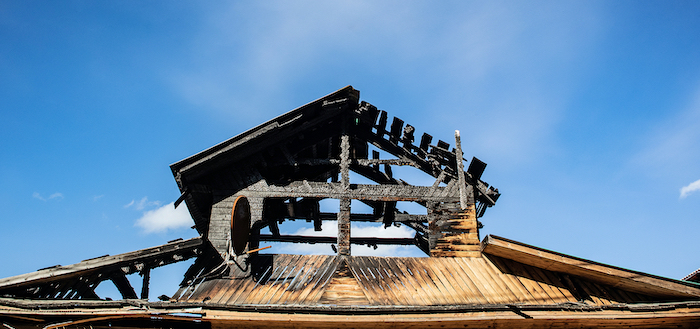U.S. Wildfires Raise Asbestos Concerns

State officials in the western United States are concerned recent wildfires may create an asbestos risk. Wildfires continue to destroy old buildings and homes, potentially built with asbestos products.
Damaged asbestos-containing materials (ACM) put residents, first responders and cleanup workers at risk. Local governments are working with the Environmental Protection Agency (EPA) to safely clean up contaminated areas.
Request a Free 2025 Mesothelioma Guide
States With Recent Wildfires and Asbestos Concerns
Wildfires have affected western states over the past several months. As a result, state officials have raised concerns about asbestos contamination.
States affected by recent wildfires include:
- California
- Colorado
- Oregon
In these states, public health officials encourage caution around ash and debris. Residents should adhere to local safety guidelines in order to reduce exposure risks.
How Wildfires Cause Asbestos Risk
After a wildfire, asbestos building materials may be damaged. The debris left behind may be contaminated with asbestos. Asbestos fibers may also become airborne through clouds of smoke and dust. This creates a health risk for the environment and area residents.
Asbestos products are still present in many old homes and buildings in the U.S. It is most likely in homes built before 1980. However, newer structures may also contain asbestos, because the mineral is not banned in the U.S.
Asbestos-containing materials may still exist in:
- Ceiling tiles
- Flooring materials
- Insulation
- Roof shingles
- Siding
When these materials are disturbed or broken, asbestos fibers could become airborne. Individuals can then inhale or ingest the fibers.
Asbestos-containing products may be difficult to identify. It’s important for residents to be cautious when they return home. Trained asbestos abatement contractors can safely handle asbestos. If wildfire debris is believed to contain asbestos, an abatement professional should remove it.
Who Is at Risk of Asbestos Exposure After a Wildfire?
Asbestos exposure may affect individuals who come into contact with asbestos-containing debris, including:
- Cleanup teams
- First responders
- Residents
These groups may be at risk if debris is not handled safely. Exposure to asbestos can cause:
- Asbestosis
- Lung Cancer
- Mesothelioma
- Other asbestos cancers
- Pleural Effusion
- Pleural Thickening
Individuals exposed to asbestos after a wildfire should seek immediate medical care. They should notify their physician of potential exposure.
Asbestos Safety Precautions During Wildfire Cleanups
During wildfire cleanups, residents and crews should be cautious of asbestos and other contaminants. Only licensed asbestos abatement contractors should dispose of asbestos waste.
Abatement professionals take several safety precautions. To safely identify and remove asbestos, they may:
- Sample debris for asbestos
- Wet ash and debris
- Wrap debris in plastic
- Clearly label asbestos waste
- Dispose of asbestos waste in a designated landfill
Designated asbestos disposal sites vary based on location. Residents can research local and state regulations before initiating abatement. However, abatement professionals are typically well-versed in local requirements.
Some States Relax Asbestos Rules to Speed up Wildfire Cleanup Efforts
Some states have relaxed asbestos disposal regulations to speed up community rebuilding. The Colorado Department of Public Health and Environment (CDPHE) said waiving some rules will help communities quickly move forward.
Government resources are available for states facing asbestos waste concerns. For example, the EPA is working with local Oregon officials to deploy hazardous waste cleanup teams. In some Oregon counties, the EPA is working with homeowners to remove waste for free.
Contaminated debris must be properly disposed of before property owners can rebuild. Although asbestos regulations are relaxed in some areas, residents should be cautious of handling debris and seek professional help.